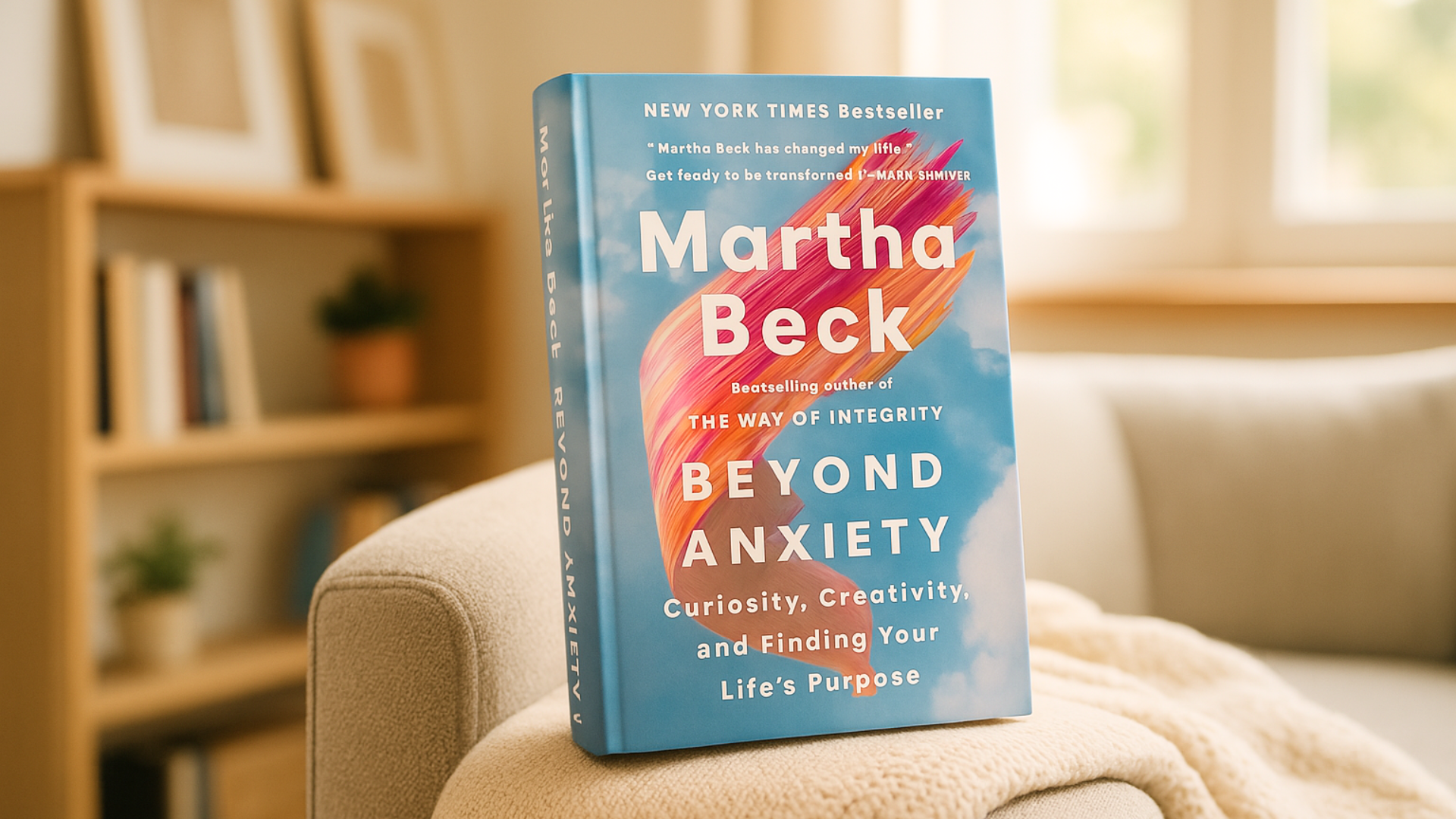Beyond Anxiety by Martha Beck: Inner Peace Through Presence

Book Review: Beyond Anxiety by Martha Beck
A reflective guide to transforming anxiety by listening more deeply to what it is trying to reveal
In Beyond Anxiety, Martha Beck offers something rare in the world of wellness books. Instead of promising to eliminate anxiety, she invites readers to view it as a signal from within, asking to be heard rather than fixed. Blending practical insight, spiritual reflection, and personal narrative, Beck shows how anxiety can become a gateway to greater clarity, alignment, and peace.
This is not a manual for calming the mind through rigid discipline or positivity. It is a conversation about the power of truth, presence, and self-trust. Beck guides readers gently, helping them explore the internal dissonance that often gives rise to chronic stress and restlessness.
What the book promises
Beck promises to shift the reader’s relationship with anxiety. Rather than treating it as a disorder to be managed, she suggests that anxiety can reveal the space between the lives we are living and the lives we are meant to live. Her core message is that when we align with our deeper truths, anxiety often lessens as a natural result.
The book draws on Beck’s experience as a life coach, author, and someone who has personally walked through anxiety and misalignment. It offers simple tools for awareness, inquiry, and realignment with what she calls the “essential self.”
What the book delivers
The book delivers a spacious, accessible journey into inner listening. Beck structures the book around the idea that anxiety is often caused by conflict between two parts of the self: the social self, shaped by external expectations, and the essential self, shaped by inner knowing. She encourages readers to begin noticing when these two selves are in conflict and to ask compassionate questions about what truth is being ignored.
Each chapter includes practical prompts, such as body-awareness exercises or journaling questions. These are designed to help readers slow down and observe rather than judge their responses. The practices are flexible and can be adapted to a variety of life situations.
What makes Beck’s approach feel different is her tone. She writes without urgency or pressure. Her encouragement is gentle and deeply validating. She offers her own story not as an example of mastery, but as a reminder that growth is messy, non-linear, and absolutely worth it.
Style and structure
The writing is conversational, steady, and reflective. Beck balances humour and insight with grace. She does not position herself as above the reader. Instead, she writes as a fellow traveller who has learned to befriend the parts of herself that once felt unbearable.
The structure is straightforward and easy to follow. Chapters build on one another without overwhelming the reader. There are consistent pauses for reflection, and each section reinforces the invitation to be curious about what anxiety is communicating. This makes the book feel like a guided conversation rather than a directive plan.
Beck’s language is clear and calm. Even when exploring complex emotions, she never uses jargon or assumes a background in psychology. Her stories make abstract ideas tangible and relatable.
Where the book shines
The book shines in its reframing of anxiety as a message, not a malfunction. Beck’s concept of the social and essential selves gives readers language for an internal experience that is often difficult to explain. Many will recognize themselves in the quiet disconnect between how they live and what they long for.
Her ability to hold space for discomfort is another strength. Rather than rushing readers toward solutions, she encourages them to sit with their feelings, ask honest questions, and notice what shifts naturally from there. This approach creates safety for those who have felt shamed or dismissed in more traditional self-help spaces.
The tone is intimate and encouraging. Beck reminds the reader that they are not broken. They are simply being asked to return to what is true. This framing alone can ease the internal pressure that often makes anxiety feel worse.
Light limitations
Some readers may wish for more integration of clinical research or therapeutic models. Beck draws from her coaching background and lived experience, which makes the material personal and intuitive but less formal. Those seeking scientific validation may want to pair this book with other resources.
The idea of the essential self is powerful, though it may feel abstract to readers unfamiliar with inner work or spiritual reflection. More concrete examples of how this self shows up in everyday decisions could help bridge that gap.
Because the book leans into intuitive insight rather than step-by-step programs, readers who prefer a structured plan may find it slower or less directive. However, that slowness is also part of its gift.
Final thoughts
Beyond Anxiety is a calm and compassionate invitation to explore what anxiety might be trying to tell you. Martha Beck writes with honesty and warmth, offering readers not a cure, but a deeper conversation with themselves.
This book is for anyone who has tried to manage or outrun their anxiety, only to realise that something deeper is asking to be heard. Beck offers tools for listening, aligning, and softening into what is true. Her approach is grounded in self-trust and quiet courage.
Highly recommended for women seeking a reflective, intuitive path toward healing.